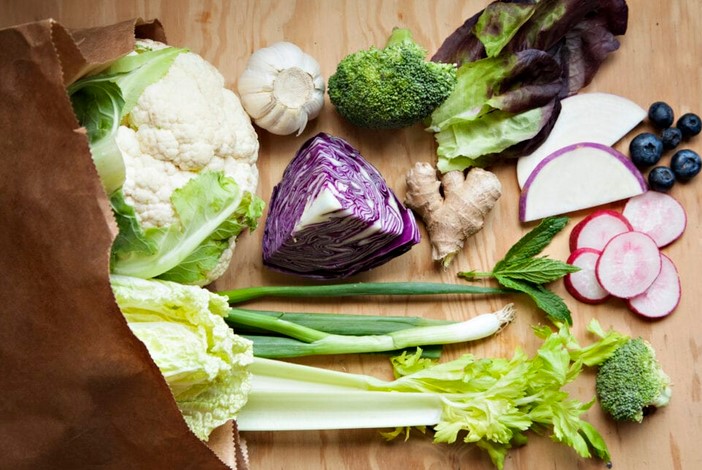
Oxalate food lists are an important tool for managing dietary oxalate intake. Oxalates are naturally occurring compounds found in many foods, and they can be problematic for some people. High oxalate intake can lead to health issues such as kidney stones, gout, and other health problems. For those who need to limit their oxalate intake, it is important to know which foods are high in oxalates and which are low. This article will provide an overview of oxalate food lists and how they can help you manage your dietary oxalate intake.
The Benefits of Knowing Your Oxalate Food List: How to Manage Dietary Oxalate Intake
Oxalate is a naturally occurring compound found in many foods, and it can be a major contributor to kidney stone formation. Knowing which foods are high in oxalate can help you manage your dietary oxalate intake and reduce your risk of developing kidney stones.
Oxalate is found in a wide variety of foods, including fruits, vegetables, grains, nuts, and legumes. Some of the highest oxalate foods include spinach, rhubarb, beets, nuts, chocolate, tea, and wheat bran. Other foods that contain moderate amounts of oxalate include sweet potatoes, okra, collard greens, and soy products.
Managing your dietary oxalate intake is important for reducing your risk of developing kidney stones. To do this, it is important to become familiar with the oxalate food list and to limit your intake of high oxalate foods. Additionally, it is important to drink plenty of fluids to help flush out the oxalate from your body.
In addition to limiting your intake of high oxalate foods, there are other strategies you can use to reduce your risk of developing kidney stones. Eating a balanced diet that includes plenty of fruits and vegetables can help reduce your oxalate intake. Additionally, avoiding foods that are high in sodium and animal proteins can help reduce your risk of developing kidney stones.
Finally, it is important to talk to your doctor about your dietary oxalate intake and any other risk factors for developing kidney stones. Your doctor can help you develop a plan to reduce your risk of developing kidney stones and can provide additional advice on how to manage your dietary oxalate intake.
By becoming familiar with the oxalate food list and following the strategies outlined above, you can help reduce your risk of developing kidney stones and improve your overall health.
Understanding Oxalate Content in Foods: A Comprehensive Guide to Managing Dietary Oxalate Intake
Oxalate is a naturally occurring compound found in many foods, including fruits, vegetables, grains, and nuts. While oxalate is an essential part of a healthy diet, consuming too much can lead to health problems. For those who are sensitive to oxalate, understanding the oxalate content of foods is essential for managing dietary intake.
This guide provides an overview of oxalate, its sources, and how to manage dietary intake. It begins by explaining what oxalate is and how it affects the body. It then outlines the sources of oxalate in food and provides tips for reducing oxalate intake. Finally, it offers advice on how to identify and manage oxalate sensitivity.
What is Oxalate?
Oxalate is a naturally occurring compound found in many plant-based foods. It is a byproduct of metabolism and is also produced by certain bacteria in the gut. Oxalate binds to minerals such as calcium and magnesium, forming insoluble salts that can be difficult for the body to absorb.
How Does Oxalate Affect the Body?
When consumed in excess, oxalate can cause health problems. High levels of oxalate in the urine can lead to kidney stones, while high levels in the blood can cause calcium deficiency. In addition, oxalate can interfere with the absorption of certain vitamins and minerals, such as iron and zinc.
Sources of Oxalate in Food
Oxalate is found in a wide variety of foods, including fruits, vegetables, grains, and nuts. Some of the highest sources of oxalate include spinach, rhubarb, beets, nuts, chocolate, and tea.
Tips for Reducing Oxalate Intake
For those who are sensitive to oxalate, reducing dietary intake is essential. Here are some tips for reducing oxalate intake:
• Choose low-oxalate foods: Choose foods that are low in oxalate, such as apples, bananas, and carrots.
• Limit high-oxalate foods: Limit foods that are high in oxalate, such as spinach, rhubarb, and beets.
• Cook foods properly: Cooking can reduce the oxalate content of some foods, such as spinach and beets.
• Avoid processed foods: Processed foods often contain added oxalates, so it is best to avoid them.
• Drink plenty of water: Drinking plenty of water can help flush out excess oxalate from the body.
Identifying and Managing Oxalate Sensitivity
If you are sensitive to oxalate, it is important to identify and manage your sensitivity. Here are some tips for managing oxalate sensitivity:
• Monitor your symptoms: Pay attention to any symptoms that may be related to oxalate sensitivity, such as abdominal pain, nausea, and fatigue.
• Keep a food diary: Keeping a food diary can help you identify which foods may be causing your symptoms.
• Talk to your doctor: If you suspect you are sensitive to oxalate, talk to your doctor about testing and treatment options.
• Follow a low-oxalate diet: Following a low-oxalate diet can help reduce symptoms and prevent further health problems.
By understanding the oxalate content of foods and following the tips outlined above, you can manage your dietary oxalate intake and reduce the risk of health problems.
Conclusion
The oxalate food list is a valuable tool for managing dietary oxalate intake. It provides a comprehensive list of foods that are high in oxalates, as well as those that are low in oxalates. By using this list, individuals can make informed decisions about which foods to include in their diet and which to avoid. Additionally, the list can be used to help individuals with kidney stones or other conditions that require a low-oxalate diet to make dietary choices that are both healthy and safe.